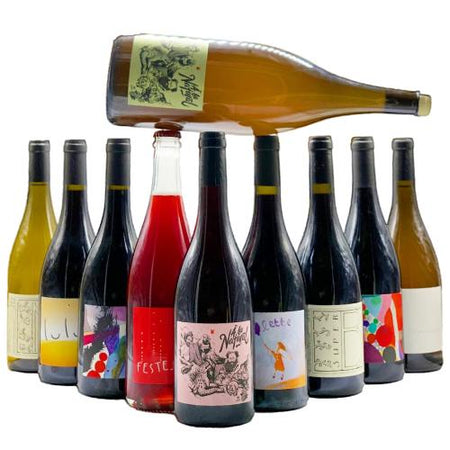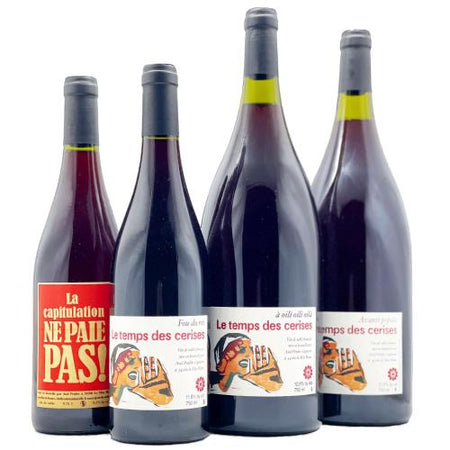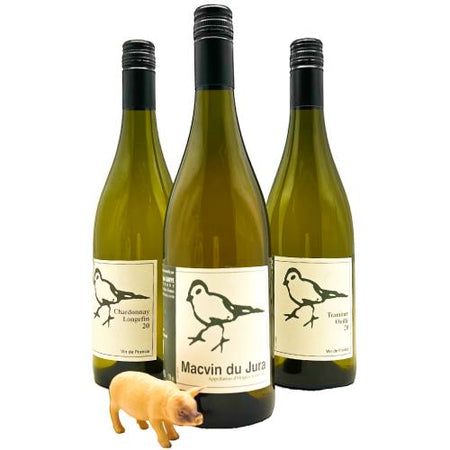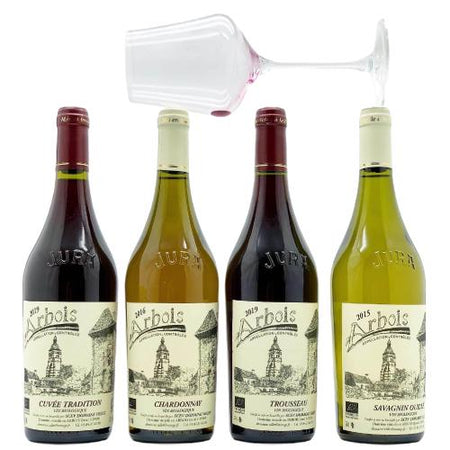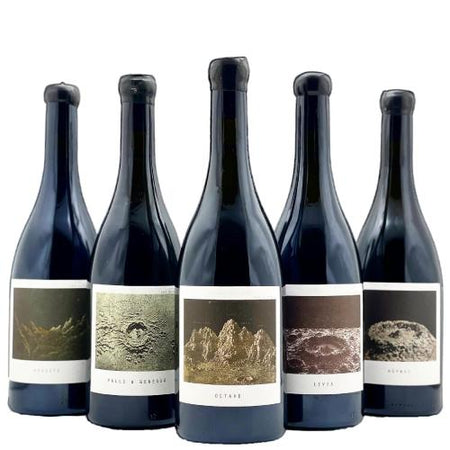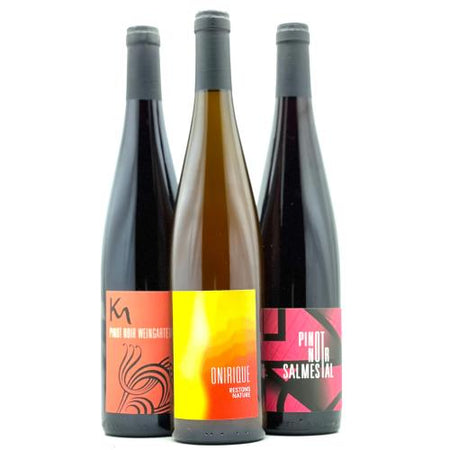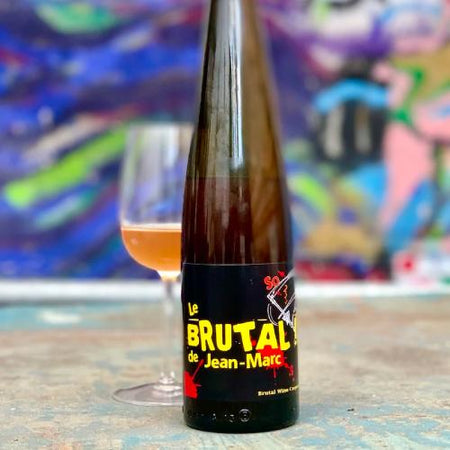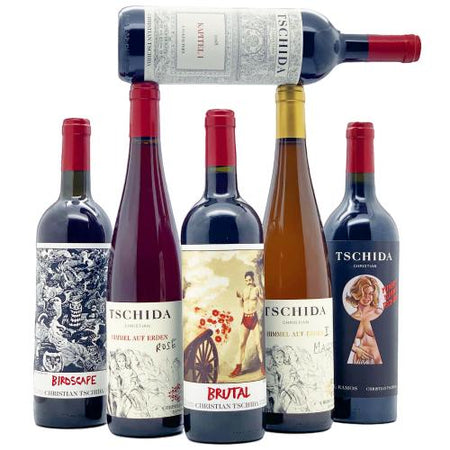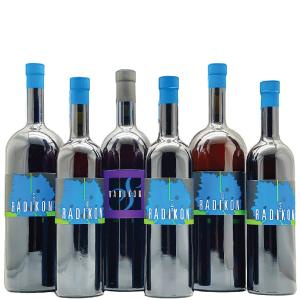TRY CLOS BATEAU WINES

JouJou 2024
Clos Bateau
70 year old Gamay vines. Super vibrant





Sang de Terre 2024 (RARE!)
Clos Bateau
Qvevri Beaujolais Pinot - 570 bottles!



Babatise 2024
Clos Bateau
Silvaner + Riesling + Pinot Gris


Côte de Brouilly 2024
Clos Bateau
Like a Black Forest Gateau!!! YUM!


Ousia 2024
Clos Bateau
Energetic Beaujolais red-white blend!


Bateau Blanc 2024
Clos Bateau
Direct Press Beaujolais Chardonnay



Tonic of Wildness 2020 (RARE, 810 bottles, one per order)
Clos Bateau
PET NAT AGED 4 YEARS ON THE LEES!!!


Aptemiz 2024 (RARE, 560 bottles!)
Clos Bateau
10 Month Macerated Beaujolais Chardonnay


Poelignié Monthieux 2023 (one per order)
Clos Bateau
260 bottles. Comes with a leaf from the vines!

Tonic of Wildness 2020 MAGNUM
Clos Bateau
RARE! FOUR YEARS on the lees!!

Sang de Terre 2022 (RARE)
Clos Bateau
RARE 538 bottles made. Pinot + little Gamay
Clos Bateau: Wines, Vineyards and Animals
When Thierry and Sylvie first arrived, some of the vineyards totalling 5.5 hectares were productive but a smaller portion of that (2.5 hectares) were wild, abandoned old vines - the couple didn’t feel right about tearing it out, so instead they work very hard to tend the abandoned vines, resulting in very low yields but some top quality and grapes with a story! This Clos Bateau wine can be seen in the bottle called 'Sauvage', which is very limited in production.
Their philosophy is to work with nature, not against it, and they put a huge emphasis on biodiversity .They have planted over 100 fruit and nut trees amongst the vineyards, and their sheep help by eating weeds and fertilising the soil. The beautiful pigs are not just for aesthetics, but are also used to till the soil inbetween the vines before the first pruning.
Herbs are collected from the land to make teas as well as infusions to nurture the vines. Since the beginning, one of their goals has been to certify the vines and this is currently pending. In the cellar, after using a small clic-clac press for most of their wines, Clos Bateau take a hands-off approach, rarely testing the barrels unless needed and letting the wines have the time they need to find their perfect balance. Old Burgundy barrels are favoured for aging, alongside their two Qvevri.
As for the vineyards, they were the healthiest we encountered on our visit to Beaujolais and everything looked as it should farming in accordance to nature. It really is a beautiful ecosystem the pair have built for themselves on the property, and their love for the land really shows in all aspects.
Recommended Clos Bateau Wines

JouJou 2024
Clos Bateau
70 year old Gamay vines. Super vibrant


Ousia 2024
Clos Bateau
Energetic Beaujolais red-white blend!
Clos Bateau winemaking style
Clos Bateau let the moon cycles lead their winemaking decisions including in the cellar, such as when to press, bottle, and even how long to macerate. Only indigenous yeasts are used for fermentation and no filtering or fining agents are used. These are zero zero wines, with no added sulphites - basically, Clos Bateau use as little intervention as possible.
Due to the low yields, production is very limited and demand can be very high despite not having had too many vintages by now (they started in just 2019!) Some of their wines are limited to around just 600-700 bottles, if that. Despite not having done so many vintages, the wines however have already been very well received - from the light, wild and vibrant red Joujou to the impressive terroir-driven Côte de Brouilly ‘Le Pavé’ as well as interesting skin-contact Chardonnays, not too often found in the region. Sang de Terre is a very memorable Pinot Noir, aged in the Qvevri outside their house, buried in the ground amongst the stones...
Their red-white blends are also exciting, fusing together Chardonnay and Gamay for their Beaujolais bottlings like Ousia, but they also have a beautiful red-white blend from Alsace grapes called Babatise. When it comes to what to expect from Clos Bateau, generally you should expect the unexpected. Always with a vibrancy, and a wild, almost rustic touch. We find many of their Gamays offer a delightful touch of cacao on the finish, and a slight herbaciousness.
The wines are truly alive and honestly some of the best Beaujolais Gamay we know. No, this is not the simple Beaujolais Nouveau style, and not is it the more classic-natural Beaujolais Cru like Jean Foillard... it's quite simply - well, its very much Clos Bateau.
More facts about Clos Bateau
Interestingly, making wine is not the only thing Slyvie and Thierry are great at. They also grow many other things on their 8 hectares of land (5.5 is under vines) and have a beautiful vegetable garden next to their animal enclosure with pigs, goats & chickens.
They also use clay from their ground to make ceramic bowls, plates and mugs, which are coloured using natural pigments made from burning old vine cuttings after pruning. They are truly beautiful, and Sylvie offers these are limited pieces via the name Atelier Nouaison.
In addition to general creative and DIY elements throughout their home including beautiful tiling on the floors and a gorgeous kitchen with homemade touches, the pair also make natural hot sauce using their own Habenero chillis, carrots, pears and plums, amongst other ingredients depending on the year!
Shop a huge range of 1200+ natural wines - with free shipping options too!
Trust us. We've delivered 30.000+ orders to natural wine lovers! All orders are insured delivery.
Watch producer documentaries, interviews & top wine recommendations on our social channels.
Want advice? We love to help! Get in touch for personalised wine recommendations.

The natural wines of Beaujolais
More Info & WinesQuestions about Clos Bateau
What are the main grapes used at Clos Bateau?
The majority of grapes used by Clos Bateau are Gamay, which is actually what 98% of Beaujolais winemakers work with. They also farm a tiny little plot of Chardonnay and Pinot Noir, and have purchased some grapes from Alsace before to make an experimental blend
What is the best Clos Bateau wine?
Finding the best Clos Bateau wine is challenging! Some of the newer 2023 vintages feature integrated volatile acidity which not everyone is accustomed to, so it might be worthwhile opting for Mayga 2023 over JouJou 2023 which has a little more. Bottles like Ousia have a real experimental vibrancy to them, whilst harder to find wines like Sang de Terre (a Pinot aged in Qvevri) and Nuits Noirs have a limited production of between 760-850 bottles and are true gems worth opening at the right time with friends. Expect depth, complexity and wildness...
What else do Clos Bateau do?
In addition to making amazing wine, Sylvie and Thierry also make use of the land and nature surrounding them in other ways. They make hot sauces as a hobby, using special chillis and well as plums from their garden. Sylvie also makes the most beautiful ceramics, which she makes under the name Atelier Nouaison
What is the meaning behind the name Clos Bateau?
The french name Bateau means Boat in English, or as in Dutch is called Boot (the pair are Dutch). This is the surname of Thierry's late grandfather and Sylvie's grandparents worked on a boat, so they wanted to honour a family legacy in the domaine name. The word Clos, means stone and refers to the stone wall surrounding the property they live and work on
How many hectares does Clos Bateau work on?
Clos Bateau have a lucky and rare situation in Beaujolas, as their house, winery and vines are all on the same property, which they were thrilled to discover when they were looking as this is really not common in the region! They have 8.8 hectares of land, of which 5.5 hectares is under vine. When they arrived at the property, 2.5 hectares of that were abandoned and had very low yields when reestablished with care.







